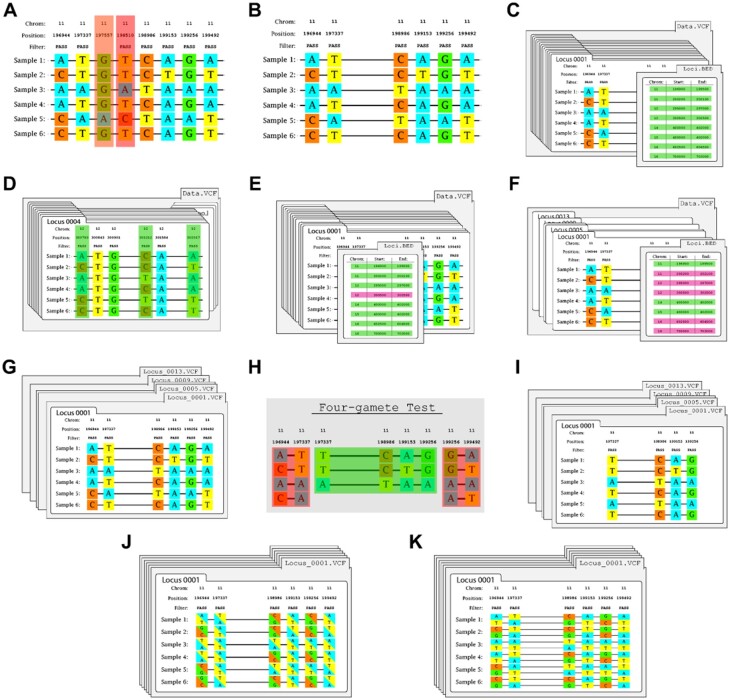Fig. 2.
Examples of operations within the PPP. (A) Given a VCF, the filtering function identifies two variant sites to remove: 197557 (highlighted in orange) due to not passing all filters—that is, PASS—and 198510 (red) due to being triallelic. (B) Once all filters have been applied, a filtered VCF will be produced. (C) Many operations require loci (as coordinates) within a VCF to be defined using a BED file. (D) Given a VCF and a BED file, the loci-filtering function will confirm that each locus contains at least four variant sites. (E) Once all loci-filters have been applied, a filtered BED file will be produced. (F) Given a BED file, the bed sample utility may be used to pseudorandomly sample a BED file to reduce the number of loci to specific number. (G) The four-gamete test requires each locus to be within a separate VCF, which may be produced using the splitting function. (H) Given a locus-VCF, the four-gamete test function is capable of identifying compatible haplotypes. In this example, the haplotypes from 196944 to 197337 and from 199256 to 199492 (highlighted in red) both fail as all possible haplotypes are observed. (I) Once the four-gamete test has been applied, compatible locus-VCFs will be produced. (J) VCFs may also contain unphased samples, the phasing function using either SHAPEIT or BEAGLE. (K) Once the haplotype estimation is complete, a phased VCF will be produced.

